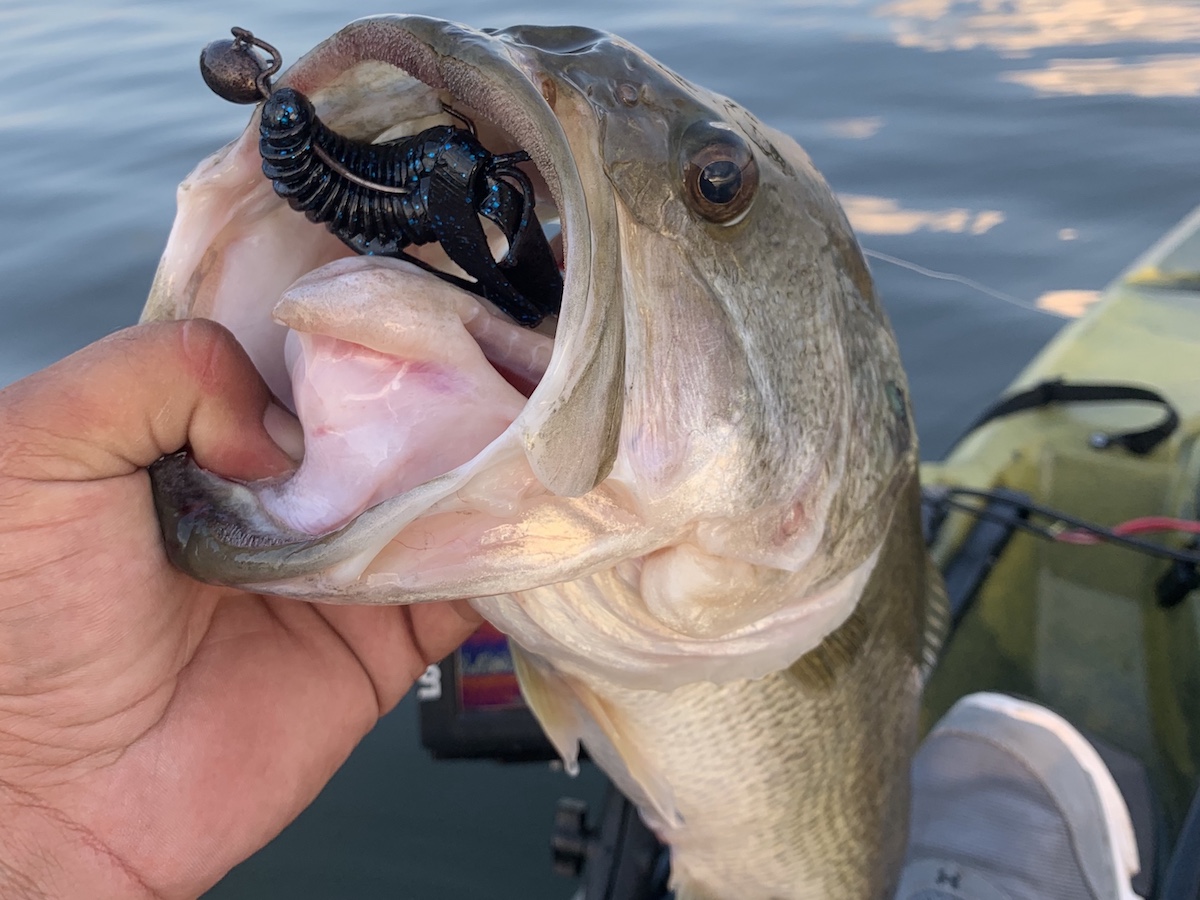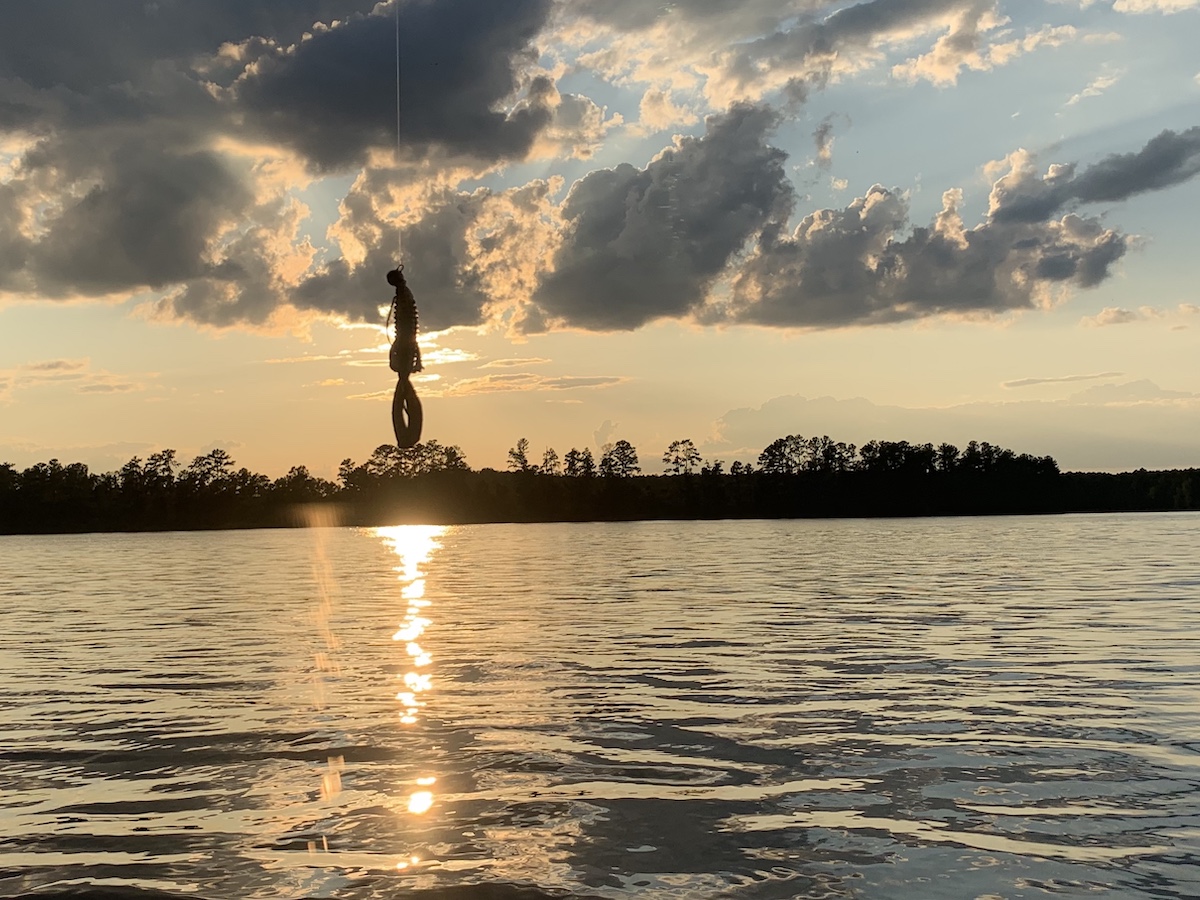Tips and Reviews
Swing-Heads: The Cure for the Summer Bass Fishing Blues
The tough summer patterns are setting in, but there is a solution to get hooked up to some big bass. Swing-heads shine this time of year, so let’s dive into the details so you can boat more Summertime “slaunch donkeys”!
The Original Swing Head: Biffle Bug
The original and well known swing-head came to market some time ago, produced by Gene Larew. This bait was designed by Tommy Biffle, a top pro in bass fishing known for his flipping prowess. The “Biffle Bug” was considered by Tommy as the “do-all” creature bait.
The concept is a football style jig head attached to a 3-4 ought wide gap hook in a way that allows the hook, and the bait attached to it, so freely articulate behind the weight. The “Biffle Bug” itself is basically a beaver style creature bait with a solid tail and some appendages for added action.
The Swing-Head
Swing-head terminal tackle has expanded recently and you have more options than just the Gene Larew versions. Small custom tackle builders all the way to well known company’s such as Sixth Sense Lures are now making their own custom versions.

The options range from football head weight size, color and hook size. The original Gene Larew Hardheads are good quality, I have tried a couple others and I haven’t seen a lot of difference in performance. The 7/16 oz. with a 3 ought hook will get the job done in most situations. The main idea is constant bottom contact, so generally there is no reason to use anything less than the 7/16 oz. head.
The Plastics
The Biffle Bug itself is a great choice for getting bites in great or tough conditions. The colors available are the only ones you will need. If you’re new to the technique, start with the original using natural colors that work well in the lake you are fishing. Experiment from there, beaver style baits all can work well, if you have a favorite give it a shot. My most productive colors are Green Pumpkin and Black with Blue Flake.
Another great choice that works well for all types of bass is the Strike King Rage Menace. This bait seems to get more bites at times than the Biffle Bug in my experience. The original Menace is a slender bait with Rage flappers. My theory is that these smaller profile baits with fast action flappers mimic more of the smaller bait that is around in the summer from the spring spawns.

Other creature baits I’ve used are Strike King Rage Bug and the Missile Baits D-stroyer. The D-Stroyer is a larger creature bait with long tails compared to the other options. I liked the performance of that bait in shallow areas as well as in heavier wood cover verses open water offshore fishing. Try different bait sizes and actions to see what works best for the water you are fishing.
Where to Fish the Swing-Head
When people talk about Summer patterns usually people think offshore. This is true with the swing-head baits, but don’t limit yourself to only offshore fishing. The bait’s design and techniques are perfectly suited for covering large areas of open water structure: humps, points and ledges. That said, it also works well in shoreline situations where you have hard bottom and submerged grass and wood.
Hard bottom is preferred, the rockier the better.
How to fish the Swing-Head
Fishing the swing-head is very similar to slow crankbait fishing. The retrieve is slow and steady, and you need to keep constant contact with the bottom. You want to feel the bait bouncing over rocks and through cover. If you don’t feel the bait bumping into anything, you aren’t in an ideal area.
Ideal areas are where the bottom causes the articulating head to give erratic life to the bait. The bass should be on or close to the cover or structure with the deflection off the bottom causing instinctive reaction bites.
Setting the Hook
When you feel the bite: When you feel a hard whack, or s slight nibble, wait a moment for the rod to start to load and sweep the rod and reel fast to set the hook. There is no need with a sharp hook, heavy line and stout rod to “put the wood” to them when this happens. The fish and rod pulling separate directions will drive the hook. Hard hooklets can pull the bait out of the mouth or worse yet break you off. Keep in mind you are fishing rough structure and cover, sharp rocks and hard bottom can cause unseen nicks in the line. Check your line and knots often!
When they knock slack in your line: In this instance you have a bass coming at you, and you need to reel in quick until you feel weight and snap a strong 4-5 o’clock to 12 hookset to be sure you catch up and drive the hook in.
Recommended Products
Eric Nelson
Professional Kayak Bass Angler
Biography
I was born in Southeastern Massachusetts, where I began fishing for bass when I was in my early teenage years, graduating to competitive bass tournaments in my late 20’s. I moved to North Carolina in 2015 and found the passion for bass fishing from a kayak, and quickly became involved in both the local and national kayak bass tournament scenes. My fishing skills have allowed me to qualify for almost every major event since joining the clubs, be it at a club, state and even national level.
Being a professional in the online web development and design field for publications, I have always used my skills to help promote the clubs and the sport as a whole in my spare time. I have been a part of the club directors for Cape Cod Bass, and now for Carolina Kayak Anglers, one of the larger kayak clubs in the country. I am also a part of the national KBF tournament advisory board.
The Kayak Bass Fishing (KBF) format has allowed me to travel across the United States, fishing against the best fisherman in the country. Now with the KBF Pro format, and the merging with the FLW organization, I am looking forward to where this adventure takes me in the future.
Highlights
Total Career Earnings - $3,250
Competition Highlights
Inaugural FLW / KBF Cup Championship Qualified 2019 - Hot Springs, AK
KBF National Championship Qualified 2020 - Lake Guntersville, AL
KBF Challenge Championship 2018 - Toledo Bend, LA
2019 KBF National Championship - 57th overall out of 462 anglers - Shreveport, LA
KBF Regional Trail Championship Qualified 2019 - Lake Wheeler, AL
KBF National Trail Championship Qualified 2019 - La Crosse, WI
2nd Place 2018 KBF National Trail - High Rock Lake, NC
2nd Place 2019 - Plastic Pirates - Randleman Lake, NC
11th Place - 2019 KBF Southeastern Region Trail - Santee Cooper Lakes, SC
13th Place - 2019 KBF Southeastern Region Trail - Chickamauga Lake, TN
46th Place 2019 FLW / KBF Cup Qualifier - Nickajack Lake, TN
2nd Place - Plastic Pirates - Randleman Lake 2019
1st Place - Cape Cod Bass, 2002 - Lake Winnipesaukee, NH
1st Place - Cape Cod Bass, 2008 - Glenn Charlie Pond, MA
More Details
Rod: 7’ or longer Med-Hvy / Fast-Action
Reel: 6.x to 7.x
Line: 50-65lb braid to 15-20 lb flourocarbon leader
Hook Size: 3/0 - 4/0 regular to heavy gauge wide gap
Weight: 7/16 oz
Depth Range: 3-30'
Bottom: Hard bottom
Cover: Submerged hard cover, grass

Comments
Be the first to comment on this article!